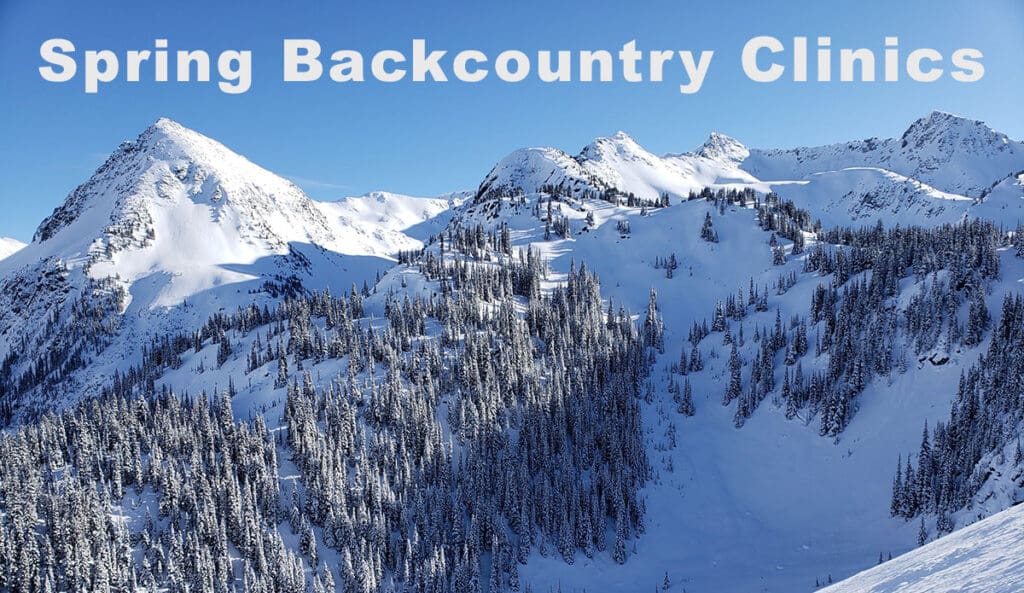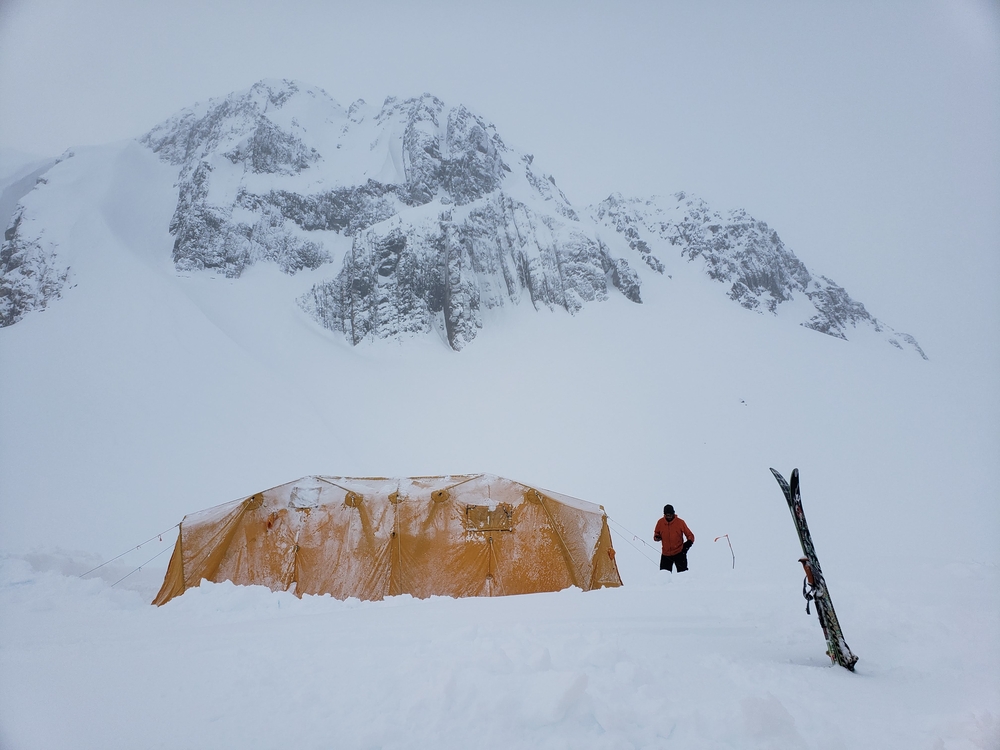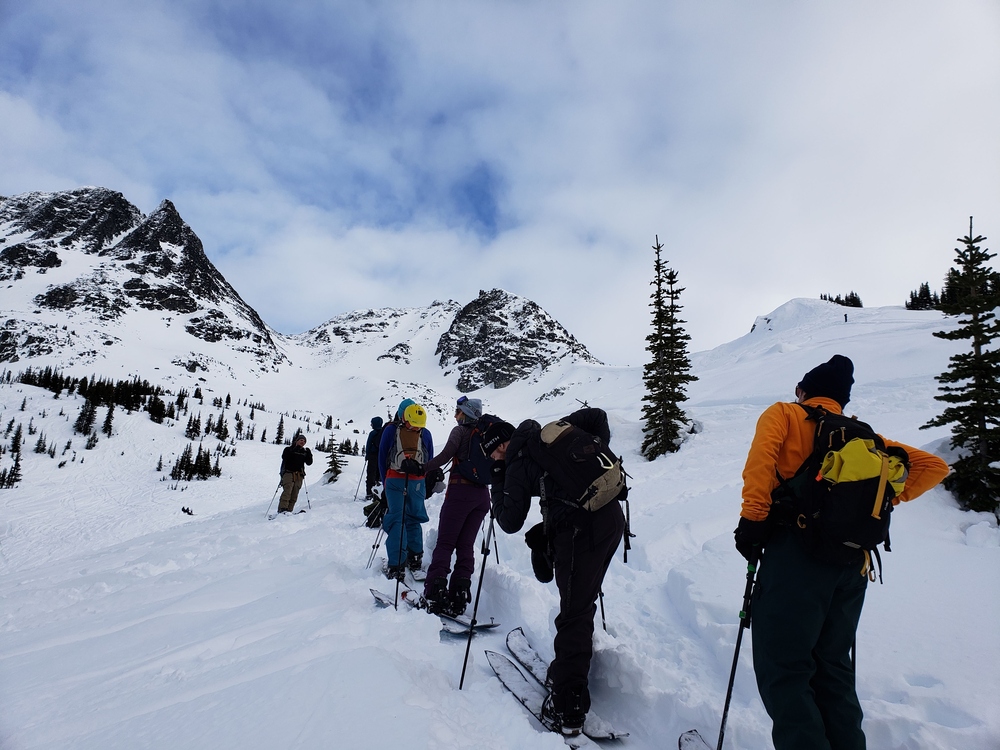Spring is arguably the best season of the year for backcountry skiing and splitboarding.
Warmer temps, longer days, and a solid snowpack are usually in the cards. Winter is great for snowfall, but as we know, too much snow can be a bad thing in the backcountry. So in the mountains, spring is where we can really step out into bigger terrain. So come out and enjoy the longer days and usually sublime conditions with a crew of like minded people looking to level up their skills, awareness, and experience in the backcountry.
This isn’t your typical avalanche course that is so prevalent in backcountry education. It’s important to know about avalanches, of course. But there is much more to being a well-rounded backcountry athlete than avalanche awareness, and we want to speak to that.
Using a holistic approach inspired by martial arts, the Spring Ascension Clinics by Alpine Islands is a new take on backcountry education. By having a consistent routine, we aim to develop skills and senses over time, not just on a one-off. We’ve found that it’s the best way to learn, develop, and grow your skills.
Skip Ahead
- What’s Included
- Who Are These Courses For?
- Course Structure
- Course Itinerary
- Gear Requirements
- Cost, Dates, and Location
- FAQ
- Sign Up
Why Join These Clinics?
The Spring Ascension Clinics help shape you to be ready for any challenge in the backcountry, whether those challenges are planned or unplanned. Focusing on a different group of skill sets each week, we will help train the body and mind to gain a new sense of awareness that can’t be taught in a weekend course. Only through consistent practice and feedback is the ability to truly ascend.
Safe, Controlled Environment: By helping to control the variables, you have a safe venue to practice skills without having to deal with external distractions. When you really need the skills is the worst time to be trying to figure it out, so be ready and aware to have the skills polished in the hopes you don’t have to ever use them in the field.
Gain Confidence: Remove the barriers to greatness by having more confidence to step out into bigger terrain when the conditions are right.
Connect with Like-Minded People who are focused on developing their skills responsibly, while having fun and exploring nature.
Small Group Setting: Our groups max out at a 6:1 ratio of participants to leaders, meaning you will always have time and attention to ask all the questions and try different things without fear of not being heard.
What’s Included in the Clinics
Expert instruction from local rippers who have been exploring the Sea to Sky backcountry for over two decades.
Five Weeks of in-depth learning, both in a controlled dryland atmosphere and in the field.Hands-on practice and feedback on avalanche rescue tools, ropes, emergency splints and belay/lowering scenarios.
Instant Feedback In a real-world setting from people who have been doing it for decades.
Access to the Alpine Islands resources and community.
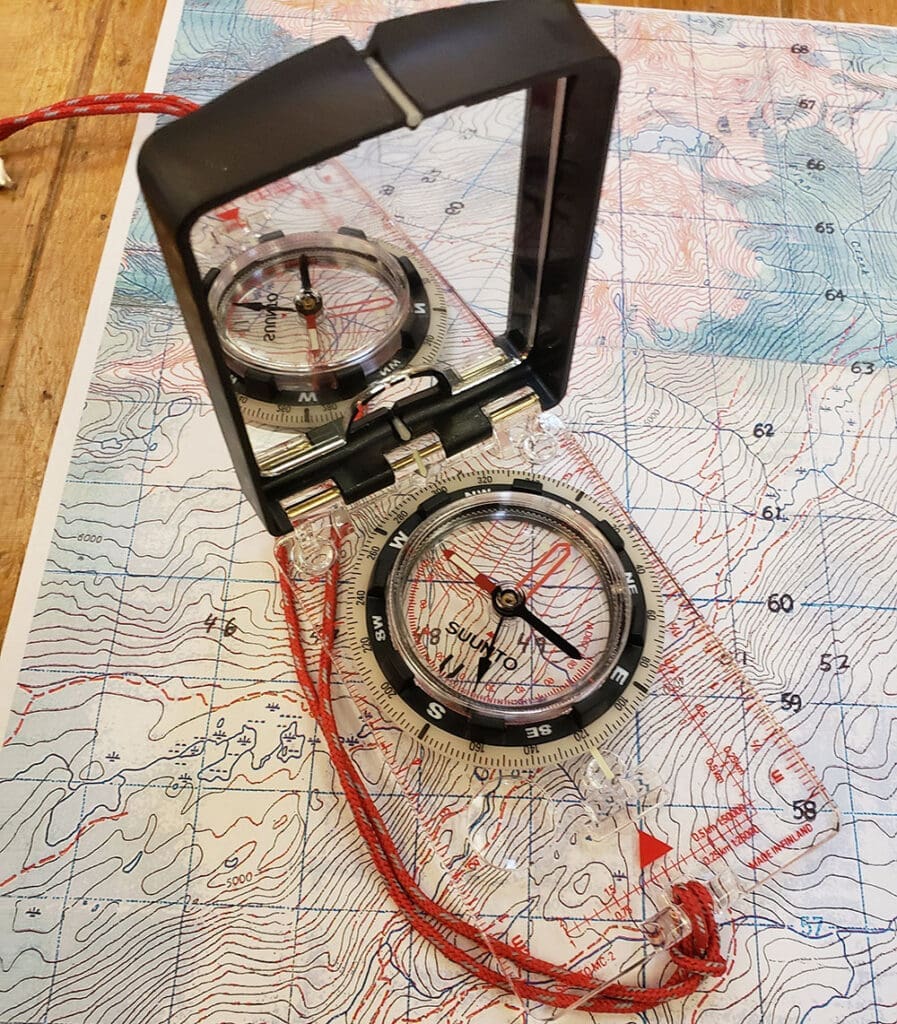
Who Are These Courses For?
This is for beginner to intermediate backcountry skiers and splitboarders looking to level up on their skills and step into bigger terrain. When following our Belt System, it would be for the white and blue belts, with some green belts who may be rusty and not have gone out much this year, or are simply looking to be more confident in their surroundings.
It’s for those who want to train in real-world conditions without high-risk exposure. For those who learn by doing, and who learn from mistakes in a controlled setting without the consequences of making those mistakes in danger zones.
It’s also for those who have taken an AST course yet still want to learn and practice other aspects of backcountry skiing and splitboarding: terrain awareness, navigation, and emergency survival situations out in the wilderness.
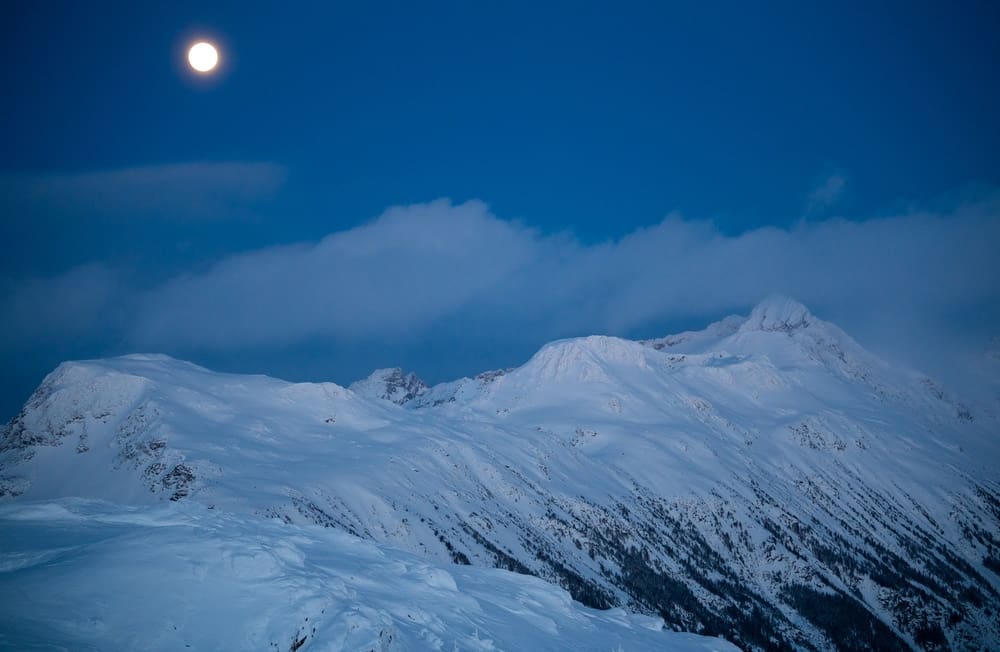
Course Structure
The course will take place twice per week: One on dry land in the valley, and one out in the field. Each session will be two hours long. The field session will have the option to go have fun and chase an objective with your peers, but that portion will not be an official part of the course. That is more just to put the skills into practice.
Dryland Sessions (Weekday) will focus on gear management, route planning, and theory. We will also work on common first-aid situations in a controlled environment. Basic knots and hitches will also be practiced to learn before taking it to the field.
Field Sessions (Weekend) focuses on snow safety and analysis, emergency situations, and navigation. While we will have a structure for each day, we will also leave time to adapt to the weather and conditions of the day to better understand the day-to-day variables.
Course content will also be recorded to use later. Course participants will also gain membership to our online portal that includes a social network to connect with others for trips, rides, and making new friends/touring partners.
Course Itinerary
Click the links for more info:
- Week 1: Foundations of Backcountry Safety & Rescue
- Week 2: Terrain Awareness & Route Planning
- Week 3: Avalanche Rescue & Snowpack Awareness
- Week 4: Outdoor Survival & Shelter Building
- Week 5: Rope Skills for Self-Rescue & Crevasse Training
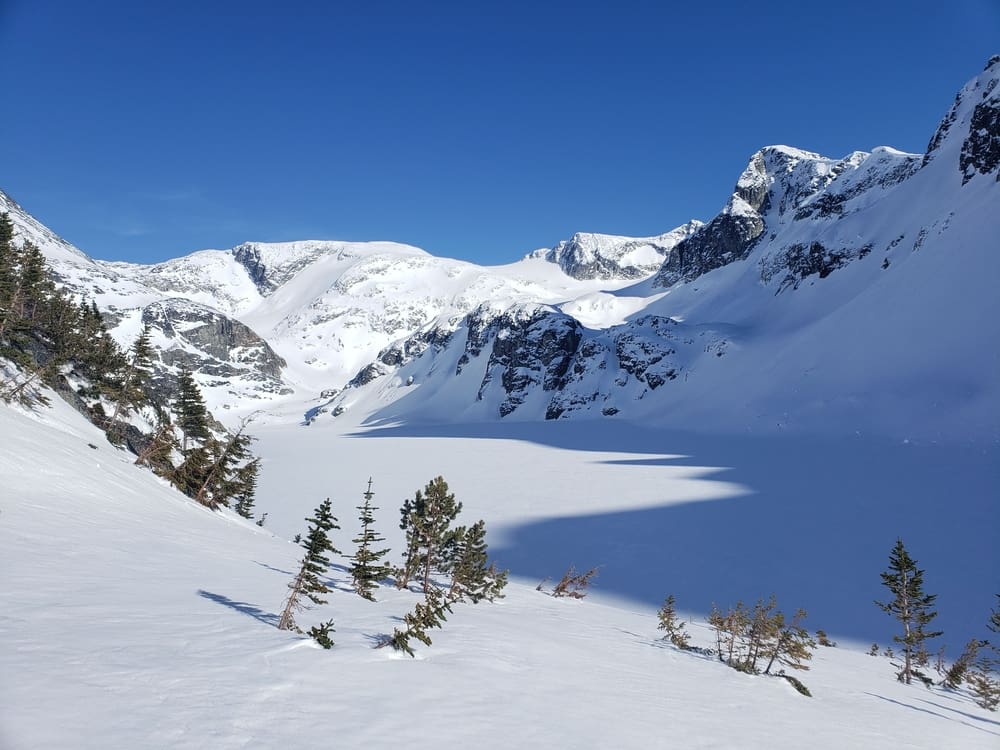
Week 1: Foundations of Backcountry Safety & Rescue
Goal: Build a solid foundation in safety protocols, risk management, and rescue preparedness.
Dryland Session: Introduction to Backcountry Safety & Rescue Basics
Welcome & Course Overview What to expect over the next 6 weeks.
Situational Awareness & Risk Perception Understanding why most backcountry incidents happen and how to train your mind to recognize red flags.
Intro to Essential Backcountry Gear Breakdown of beacons, probes, shovels, first aid kits, survival gear, and emergency tools.
Basic Knots & Hitches Introduction to figure-eight, clove hitch, prusik knot, and their practical applications.
Emergency Planning & Communication: What to do before you leave and how to prepare for worst-case scenarios.
Field Session: Hands-On Gear & Search Techniques
Gear Check & Pack Setup – How to efficiently pack for backcountry travel.
Companion Rescue Basics – Beacon, probe, and shovel practice in a controlled environment.
Solo Navigation Challenge – Using terrain features, maps, and compasses to navigate a short course.
Practice Basic Knots & Hitches in the Field – Hands-on use of prusik knots for self-rescue scenarios.
Week 2: Terrain Awareness & Route Planning
Goal: Understand terrain features, route selection, and safe travel techniques.
Dryland Session: Reading the Terrain With Flow in Mind
How to Read a Topographic Map : Identifying avalanche-prone slopes, terrain traps, safe exits.
Navigation: compass use, and triangulation.
Further Knotwork: Introduce munter hitch and anchor systems.
Route Planning Workshop: Using maps to plan safe and efficient uptracks and runs
Field Session: Terrain Application & Hands-On Navigation
Navigation Exercise: Participants must lead a route using only a map and compass.
Terrain Identification: Recognizing wind-loaded slopes, terrain traps, and exit strategies.
Emergency Route Planning: Quick decision-making practice for changing conditions.
Ropework Practice: Setting up a simple anchor system for emergency use.
Week 3: Avalanche Rescue & Snowpack Awareness
Goal: Review avalanche safety, rescue techniques, and snow science.
Dryland Session: Avalanche Safety & Snowpack Analysis
Assessing the Snowpack – How to identify persistent weak layers and red flags.
Advanced Beacon Use & Search Strategies.
Self-Arrest & Controlled Falls – Staying in control when things go wrong.
Field Session: Avalanche Rescue Drills
Full Avalanche Rescue Scenario: Participants conduct a live search-and-rescue drill.
Probing & Digging Techniques: Efficient shoveling methods to recover buried victims faster.
Emergency Shelter Building: Creating a snow cave or bivy in case of an emergency.
Anchor Systems & Rappelling Basics: Introducing rope techniques for steep terrain exits.
Week 4: Outdoor Survival & Shelter Building
Goal: Prepare for unexpected overnight stays and harsh conditions.
Dryland Session: Cold-Weather Survival & First Aid
How to Survive a Night in the Backcountry.
Building an Emergency Shelter & Fire Starting Techniques
Hypothermia & Frostbite Prevention.
Wilderness First Aid Basics: Using different items to help transport people of varying injuries
Field Session: Survival Scenario Training
Building Shelter: Snow caves, emergency bivy setups, and tree wells.
First Aid Scenario: Treating hypothermia and broken limbs in a remote setting
Team Communication Drills: Making group decisions under pressure
Week 5: Rope Skills for Self-Rescue & Crevasse Training
Goal: Learn rope rescue systems and technical skills for backcountry emergencies.
Dryland Session: Rope Skills for Backcountry Travel
Prusik Knots & Haul Systems
Rope-Assisted Descents & Hand Lines
Intro to Crevasse Rescue & Z-Pulley Sys
Field Session: Rope Rescue & Practical Application
Simulated Crevasse Rescue: Practicing Z-pulley and self-extrication.
Team-Based Rope Work: Creating anchor points and belay setups.
Gear Requirements
You will need:
- Personal Ski/Splitboarding Gear including skins, outerwear, poles, boots, etc
- Avalanche safety gear: Beacon, Probe, Shovel
- Recommended additional items: Helmet, first aid kit, emergency bivy, ski straps, bailing wire, old bike tube
- Need gear? Contact us for discounts with our rental partners
Cost, Dates and Location
Courses for 2025 will begin the week of March 31 and take place in the BC coast mountains and Mount Baker National Forest. Once you fill out the registration form we will contact you on more specifics. People will be grouped according to location and experience level.
Costs are $150 per week (both sessions), or $600 for all five weeks. Priority will be given to people signing up for the full five weeks, with extra spots for a-la-carte participants.
How To Sign Up
Fill out the registration form with all your details. When that is complete, we will send you an invoice to collect payment. You can also pay in cash in person at your first event.
Once that happens, you will receive a confirmation email with next steps.
Frequently Asked Questions
Do I need prior backcountry experience?
No, but basic snowboarding skills and decent fitness is highly recommended.
Will I be riding technical terrain?
No. These clinics are focused on training, without high-risk movement. We will be in zones close by though if you want to go for a rip before or after, depending on the time. We’re not focusing on riding clinics just yet, just on how to get you there safely.
What if I only want to do one particular session?
We get it, life is busy and it’s hard to jam everything in. But these clinics are meant to build upon each other. So if you’re just looking for a one-off experience, it’s worth getting a guide.
What if I miss a session?
Sessions will be recorded in case you miss one, and we will always make time to ensure you can get the resources to practice what you missed.
Where is it located?
We are based in the Sea to Sky corridor and will be making the decision for where to meet in the field that week. The goal will be to have it be in similar locations but that isn’t always the best option. Dryland sessions will be in either Squamish or Vancouver, with the possibility of one in Whistler/Pemberton with enough signups.
Sign Up Now
Fill out the signup form below to begin levelling up in the mountains!
